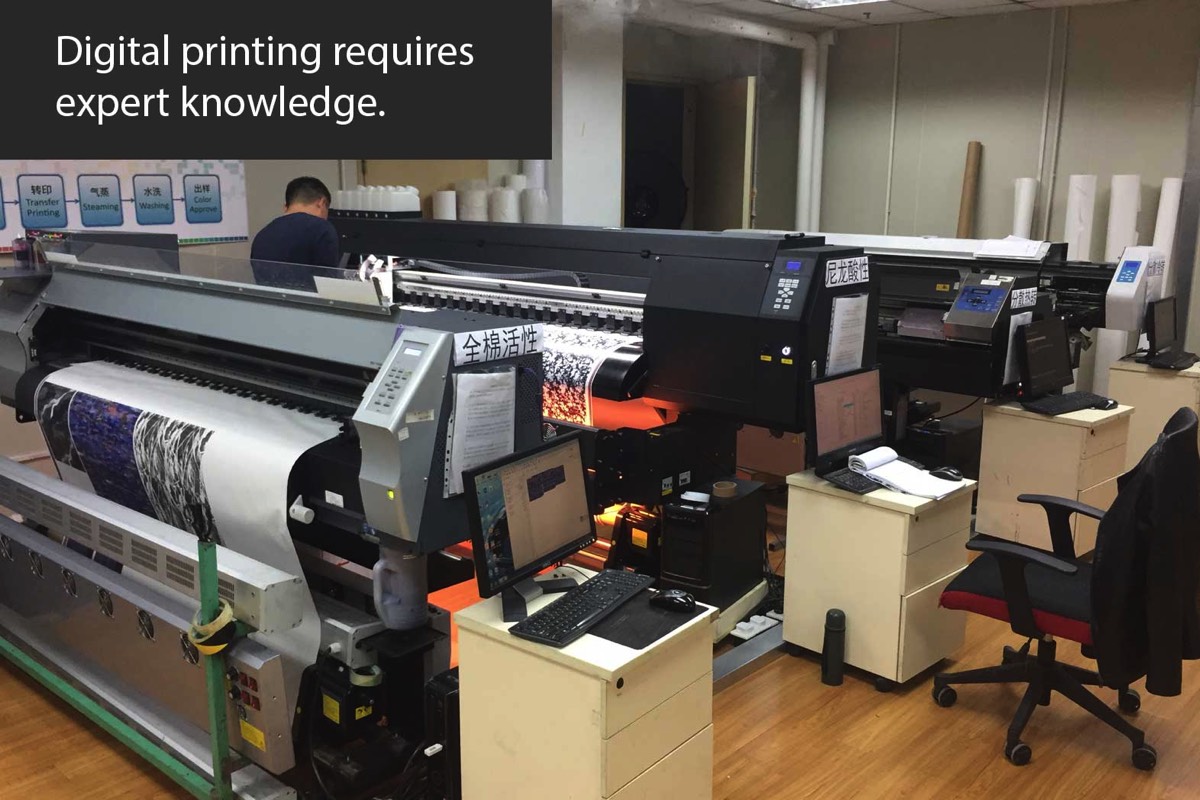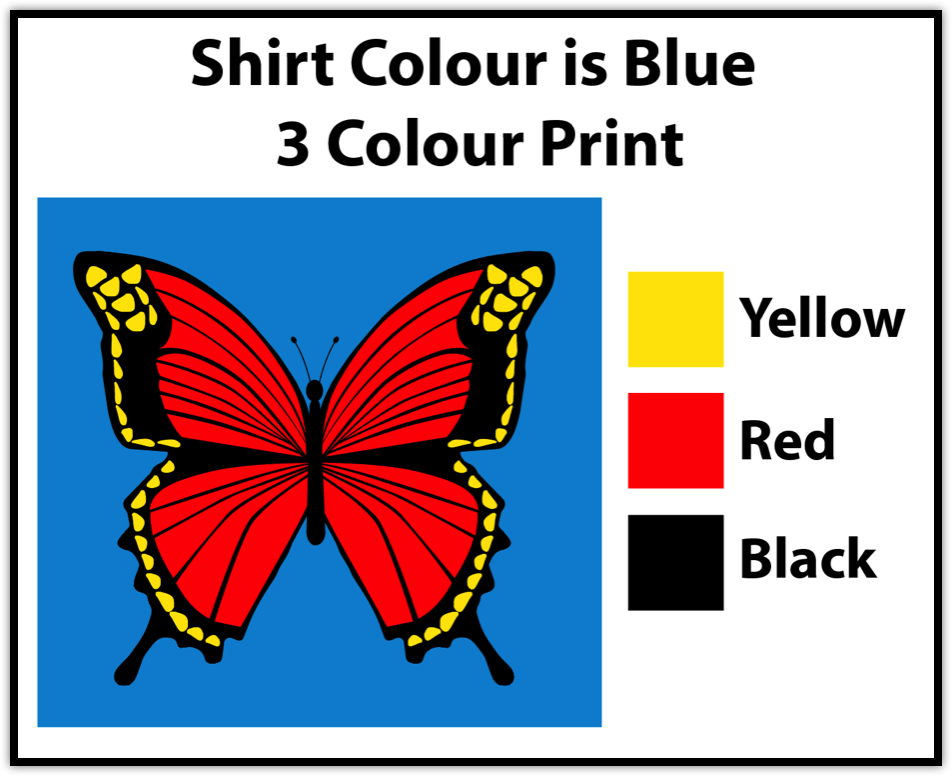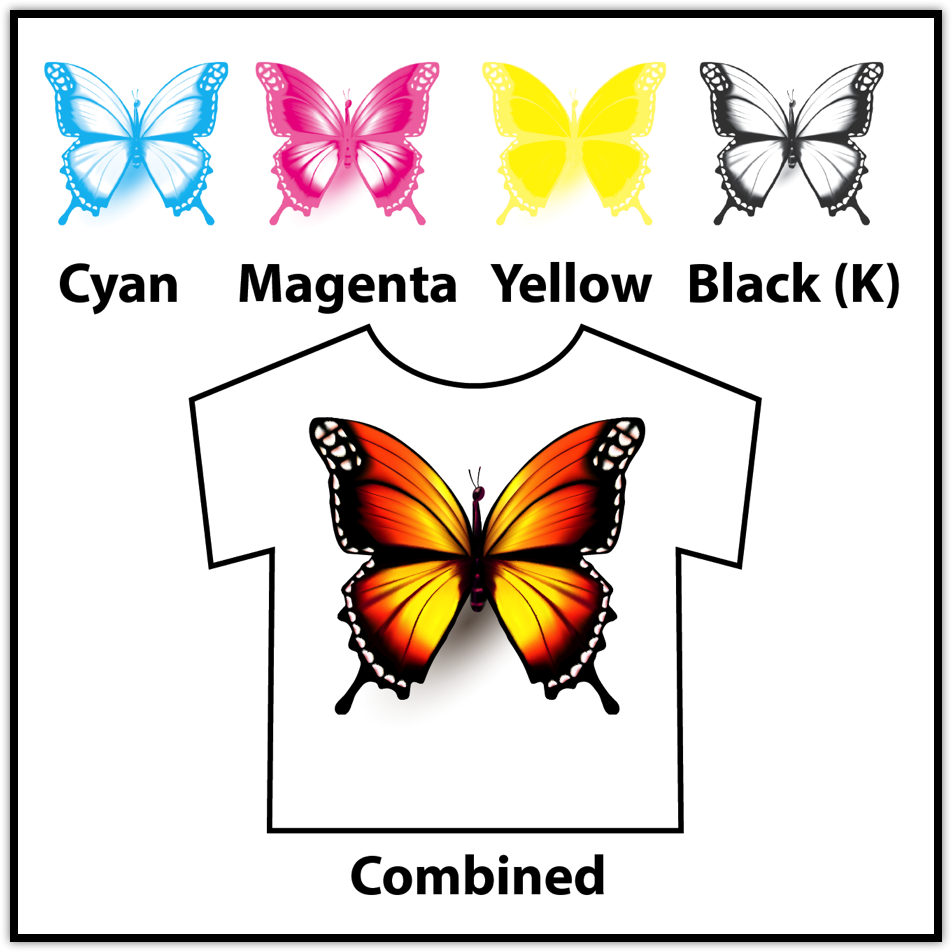Garment Printing Primer
Who will decide about printing technology?
Usually the factory will take care of the printing without you having to get you involved, so, knowing the details is for control freaks like me. I like to follow the mantra, “knowledge is power.” The more you know, the better you are able to control price, and get the quality you want the first time around. This is why I decided to include this garment printing primer as something you should prepare for before meeting the factory.
Here are some basic topics you will encounter when discussing printing with sewing factories in Vietnam:
Ink Quality: Water Based Inks vs. Plastisol Inks
Screen-printing Techniques: Spot Color vs CMYK
All Over Print or Piece Print
Digital Printing Options
Watch my introduction video and read below to learn more about producing printed garments in Vietnam.
Here are some basic topics you will encounter when discussing printing with sewing factories in Vietnam:
Ink Quality: Water Based Inks vs. Plastisol Inks
Screen-printing Techniques: Spot Color vs CMYK
All Over Print or Piece Print
Digital Printing Options
Watch my introduction video and read below to learn more about producing printed garments in Vietnam.
Services We Offer
eBooks
Courses
Consultation
Factory Introductions
Factory Tours
Production A to Z
When is a good time to schedule a time to talk?
Please fill in our contact form below,
then click the submit button.
See you in Vietnam!
What basic information do you need to know about garment printing in Vietnam?
Garment Printing Primer
• All-over-print
• Piece print
• Spot print
• CMYK print
• DTG
• Dye Sublimation
Ask me and I will explain each one or learn more below. This is my garment printing primer.
• Piece print
• Spot print
• CMYK print
• DTG
• Dye Sublimation
Ask me and I will explain each one or learn more below. This is my garment printing primer.

Schedule a Factory Tour Today!



Ink Quality: Water Based Inks vs Plastisol Inks
As with cooking, it’s all about the ingredients. Choosing the right ink is critical to getting quality print results. Usually the print factory will not disclose what inks they are using because they use cheap Chinese inks. There are also Italian inks, German inks and Japanese inks that are more expensive, but these inks look better and last longer. If print is important to you, then you need to be aware of the different types of inks and ask where the inks are coming from. Garment printing primer tip #1.
The decision you will have to make is whether to use water-based or plastisol inks. Water based inks have a nicer hand feel, don’t last as long and are expensive. Plastisol based inks have a heavy hand feel, are cheaper and last longer. Ask the factory to show you an example of each. I prefer water based inks, but a good printer can use cheap Plastisol based inks and get great results – it depends on their level of expertise.
Sewing factories normally outsource the printing, so it’s important to keep in mind that when you are talking to the sewing factory you are not talking directly to the screen-printing experts. Often the sewing factories don’t know which inks are being used. They trust the sub-contractor to do their job without dictating details, like, what country the ink comes from. I like sharing garment printing primer tips.
Spot Color vs CMYK
Screen-printing technique options: The next challenge you will encounter after choosing your inks is answering the question: how many colors are in my artwork? If your artwork has less than twelve colors then the screen printer will most likely use the Spot Color Process. If your artwork has more than twelve colors then the screen printer will use the CMYK process. Here are two pictures that illustrate when to use Spot vs CMYK. For example, if you print a photograph on a t-shirt, then you must use the CMYK method because the photograph has thousands of colors. Garment printing primer tip #2.
Spot Color for less than 12 clearly separated colors.

CMYK for Photo Prints

You will encounter vocabulary problems when discussing the technical details of screen-printing. For example, the factory may not understand what you mean by Spot Print. They might refer to it as normal screen-printing. Or, instead of CMYK printing they will refer to it as gradient print. Be prepared for misunderstandings and find ways to communicate your ideas with pictures via email to double confirm that A = A. Another valuable garment printing primer insight.
All Over Print (AOP) vs Piece Print
AOP is when you print the same artwork all over the fabric before you cut the fabric. A typical screen size for AOP is 1.6 meters wide by 1.2 meters wide. This is what they call “the repeat.”
Piece print is when you cut the fabric first and then print on the sleeve only, for example. The screen size is usually 35 cm wide by 43 cm long. Screen sizes can vary depending on equipment used.
Minimum Order Quantities (MOQ) for AOP is 1,000 meters of one design. The MOQ for piece print screen-printing is 1,000 pieces. If you ask the factory to do less than their MOQ they will either refuse to do the printing or charge you a surcharge. Garment printing primer tip #3.
Digital Printing
There are two basic ways to print digitally: Direct to Garment (DTG) or Dye Sublimation. In both cases, the print head is similar to the print head in your inkjet desktop printer. With direct to garment, the print head drops the ink directly on the fabric and the ink adheres to the surface of the fabric. With dye sublimation the print head drops the ink onto special paper and then the paper is heat pressed onto the fabric. The sublimation ink then flashes to a gas at 195 degrees Celsius and the ink is impregnated into the fibers of the fabric.
What fabric works well with digital printing? DTG can be done on either cotton or polyester fabric. Dye Sublimation only works well with polyester fabric. There is a technique to do dye sublimation on cotton but it is complicated and costly. Garment printing primer tip #4.
From a business perspective, DTG works best for small quantity orders that need to be finished in 48 hours. Dye sublimation is best for sportswear that has elaborate artwork and needs to withstand the sweat of players as well as frequent washing.
In summary, if you don’t have time to learn about all of the print techniques and options, then you can send the artwork to the factory and let them make their best suggestion on how to do the printing. Excellent garment printing primer advice. You will need to send the original artwork in a PDF, Adobe Photoshop, Adobe Illustrator or Corel Draw file. The factory will let you know which method they recommend. If you send a photograph, then the file will need to be a large file that is greater than 2 MB. Garment printing primer tip #5. I would only recommend digging into the details of printing if you are genuinely interested, otherwise let the factory handle it.